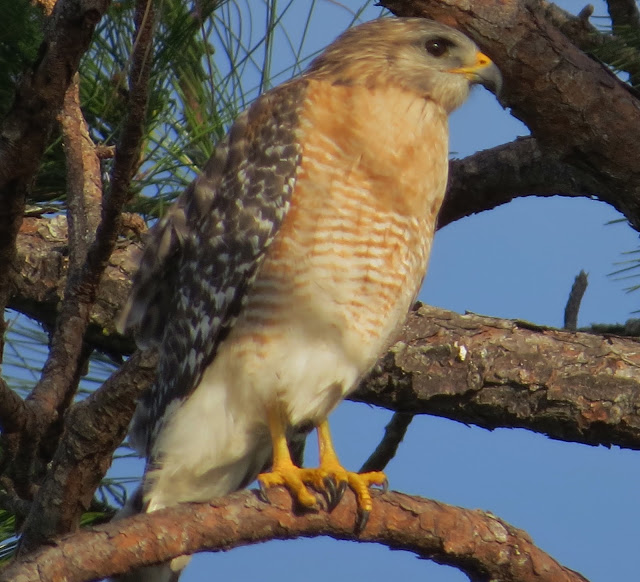 |
| White-crowned Sparrow |
Our wintering birds are starting to show up in our sunny corner of Florida. We always enjoy their arrival and sometimes rarities are among them. Last winter we had a pair of Brants visit us for a few weeks. This past week, another goose species has shown up. A juvenile Greater White-fronted Goose has been located in a pasture along North River Road. Any wild goose species is uncommon in our area, but I don't recall any reports on Greater White-fronted Geese.
 |
A very distant look at the Greater White-fronted Goose
with a few Blue-winged Teal
|
I was able to observe the bird last Sunday morning in the company of several ardent Birders. A scope is necessary as the bird will keep its distance. Was too far for my photography.
Yesterday I headed out early for the flooded Tomato Fields along Oil Well Road, near Ava Marie in Collier County. This time of year this location hosted numerous variety of birdlife - waterfowl, Canvasback, Blue-winged Teal, Northern Shovelers, Mottled Ducks, American Coots and Pied-billed Grebes. But there were Huge numbers of American White Pelicans, Great Egrets and the rest of the waders. Water is a bit deep yet for any yellowlegs, avocets or black-necked stilts. Maybe later
 |
The Canvasbacks wouldn't come close enough
for any good pics
|
A few miles east on Oil Well Road is a location called the Two Bridges. Went to this location to look for Western Kingbirds, which was located actually about a mile west of the Two Bridges. Had an interesting observation were a half dozen birds roosting in a pair of barren trees. Due to the lighting conditions I couldn't make out what they were until they flew. Snail Kites. Other species here included lots of Black-bellied Whistling Ducks and Blue-winged Teal, American Bittern, Anhingas, Cormorants, Limpkins, Grebes, Black-crowned Night-herons and Palm Warblers.
Next was a bit of a drive to the Big Cypress National Preserve--Oasis Visitor Center out on the Tamaimi Trail by the Everglades. David True has been reporting some nice sightings from here. Especially sparrows. I was interested in getting a picture or two of a White-crowned Sparrow and rewarded with a bird willing to pose.













































